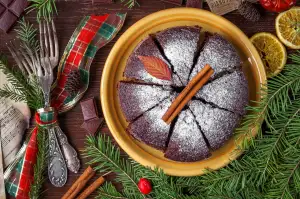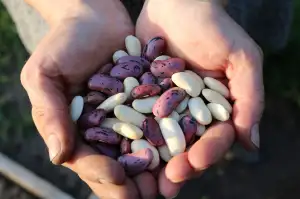Unearth the Timeless Charm: Discover the Antique Mortar and Pestle for Your Home

- History and significance of antique mortar and pestle
- Types of antique mortar and pestle
- How to identify and authenticate antique mortar and pestle
- Care and maintenance of antique mortar and pestle
- Creative uses for antique mortar and pestle in modern cooking
- Where to find and purchase antique mortar and pestle
Antique mortar and pestle, a timeless culinary tool that has been used for centuries, holds a special place in the hearts of cooking enthusiasts. This traditional kitchen implement consists of a heavy bowl (mortar) and a grinding tool (pestle), both typically made from stone or marble. The mortar and pestle work together to crush, grind, and mix ingredients, allowing you to unlock the true flavors and aromas of your culinary creations. In this article, we will delve into the fascinating world of antique mortar and pestle, exploring their history, types, identification methods, care tips, creative uses in modern cooking, as well as where to find and purchase these exquisite pieces. So let's embark on this journey and unearth the timeless charm of the antique mortar and pestle for your home.
History and significance of antique mortar and pestle
The history of the antique mortar and pestle dates back thousands of years. It was one of the earliest tools used by humans for grinding and crushing ingredients. In ancient times, it played a crucial role in food preparation, medicine making, and even spiritual rituals.
The significance of the antique mortar and pestle lies in its simplicity and effectiveness. It allowed people to transform raw ingredients into powders, pastes, or extracts with precision. This method of grinding not only enhanced the flavors and textures but also preserved the nutritional value of the ingredients.
Throughout history, different cultures have developed their own versions of mortar and pestle. From the ancient Egyptians using stone mortars to the Chinese using porcelain ones, each design reflects the unique traditions and craftsmanship of its time.
Today, owning an antique mortar and pestle is not just about having a functional kitchen tool; it is also a way to connect with our culinary heritage. Using these timeless pieces allows us to honor the traditions of our ancestors while adding a touch of nostalgia to our modern cooking endeavors.
Types of antique mortar and pestle
There are several types of antique mortar and pestle that have been used throughout history. One common type is the marble mortar and pestle, which is known for its durability and elegance. Another popular type is the brass mortar and pestle, which adds a touch of vintage charm to any kitchen. Additionally, there are wooden mortars and pestles that are prized for their rustic appeal. Each type has its own unique qualities and can be chosen based on personal preference and cooking needs.
How to identify and authenticate antique mortar and pestle
To identify and authenticate an antique mortar and pestle, there are a few key factors to consider. Firstly, examine the material of the set. Genuine antique sets are often made from materials like marble, granite, or brass. Look for signs of wear and patina, as these can indicate age and authenticity. Additionally, check for any markings or inscriptions on the mortar and pestle, as they can provide clues about its origin or maker. It's also important to research the history and characteristics of different styles of mortars and pestles to ensure accuracy in your identification process. If in doubt, consult with experts or appraisers who specialize in antique kitchenware to verify its authenticity before making a purchase.
Care and maintenance of antique mortar and pestle
Taking proper care of your antique mortar and pestle is essential to preserve its beauty and functionality. Here are some tips to ensure its longevity:
1. Cleaning: After each use, clean the mortar and pestle with warm water and a mild dish soap. Avoid using harsh chemicals or abrasive cleaners as they can damage the surface.
2. Drying: Thoroughly dry the mortar and pestle after washing to prevent moisture buildup, which can lead to mold or rust. Use a clean towel or air-dry it upside down.
3. Seasoning: To enhance the flavors of your ingredients, season your antique mortar and pestle before first use. Grind a handful of rice grains until they turn into powder-like consistency, then discard it.
4. Avoid cross-contamination: If you use your mortar and pestle for grinding different ingredients, make sure to clean it thoroughly between uses to avoid flavor transfer.
5. Storage: Store your antique mortar and pestle in a cool, dry place away from direct sunlight to prevent discoloration or warping over time.
By following these simple care instructions, you can maintain the charm and functionality of your antique mortar and pestle for generations to come.
Creative uses for antique mortar and pestle in modern cooking
Creative Uses for Antique Mortar and Pestle in Modern Cooking:
An antique mortar and pestle may seem like a relic of the past, but it can bring a timeless charm to your modern kitchen. Beyond its historical significance, this culinary tool offers a range of creative uses that can elevate your cooking skills.
Firstly, an antique mortar and pestle is perfect for grinding spices. The rough surface of the mortar allows you to release the full flavor and aroma of your spices by crushing them into fine powder. This method ensures that your dishes are infused with authentic and intense flavors.
Additionally, you can use the mortar and pestle to make flavorful pastes and marinades. By combining fresh herbs, garlic, ginger, and other ingredients in the mortar, you can create a paste with a rich texture and complex flavors. This technique adds depth to your sauces, dressings, and dips.
Furthermore, an antique mortar and pestle can be used to crush nuts or seeds. Whether you want to make homemade nut butter or add crushed seeds as a topping for salads or desserts, this versatile tool allows you to control the texture and consistency of your ingredients.
Lastly, consider using the mortar and pestle for muddling fruits or herbs in cocktails. By gently crushing these ingredients in the mortar before adding them to your drink, you can extract their essential oils and enhance the flavor profile of your beverages.
Incorporating an antique mortar and pestle into your modern cooking not only adds a touch of nostalgia but also allows you to explore new culinary techniques. So why not embrace this timeless charm in your kitchen?
Where to find and purchase antique mortar and pestle
When it comes to finding and purchasing antique mortar and pestle sets, there are a few options available. One option is to visit local antique stores or flea markets, where you can often find unique and authentic pieces. These places offer the opportunity to physically examine the mortar and pestle before making a purchase.
Another option is to explore online marketplaces and auction websites. Websites like eBay or Etsy have a wide range of antique mortar and pestle sets available for purchase. However, it is important to be cautious when buying online, as authenticity can be harder to verify.
Additionally, reaching out to specialized antique dealers or collectors might also yield fruitful results. They often have extensive knowledge about the history and authenticity of different mortar and pestle sets.
Remember, when purchasing an antique mortar and pestle, always do thorough research on the seller or dealer's reputation. It is also advisable to ask for detailed photographs and any relevant documentation regarding the piece's origin or age.
By exploring these avenues, you can add a touch of timeless charm to your kitchen with an authentic antique mortar and pestle set.
In conclusion, incorporating an antique mortar and pestle into your kitchen can truly elevate your home cooking experience. Not only do these timeless tools add a touch of charm and nostalgia to your culinary space, but they also offer unparalleled functionality and versatility. From grinding spices and herbs to crushing garlic and making pastes, the mortar and pestle allows you to unleash flavors that are simply unmatched by modern appliances. So why not embrace tradition and bring the magic of an antique mortar and pestle into your kitchen? Your taste buds will thank you.
Published: 01. 02. 2024
Category: Home



